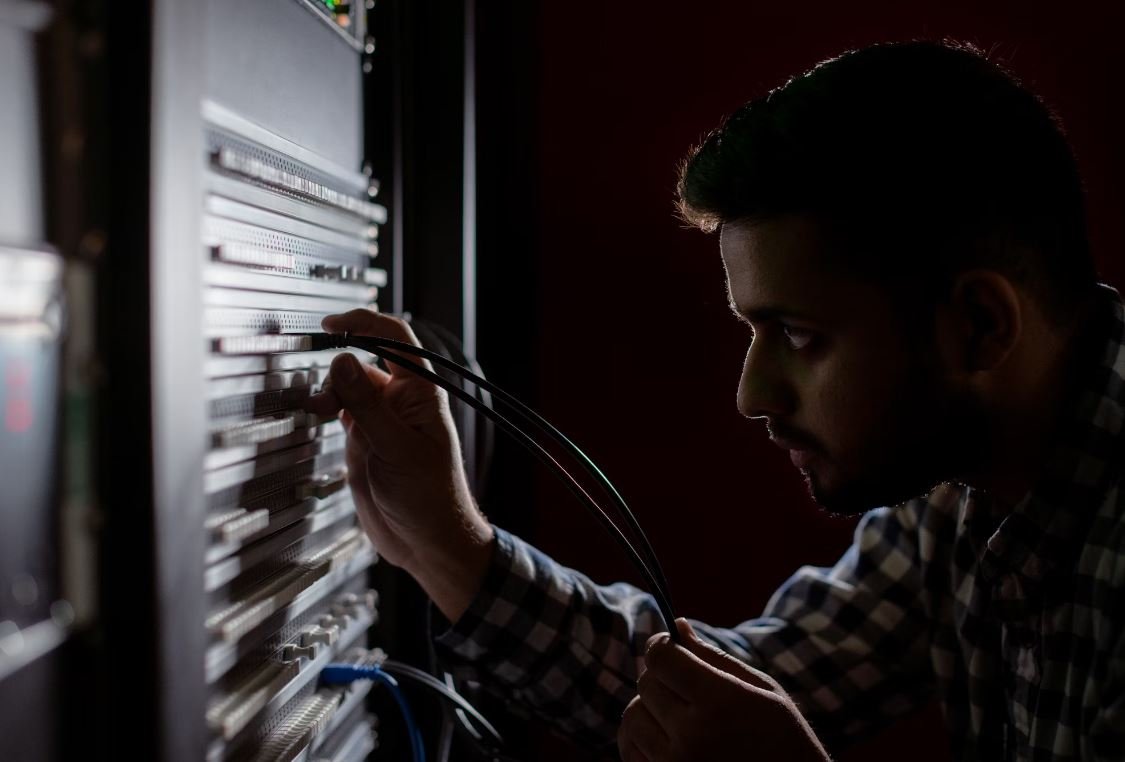Deepfake Face
Deepfake face refers to the creation of realistic yet fake media content using deep learning and artificial intelligence techniques. It involves superimposing one person’s face onto another person’s body or altering facial expressions in a manipulated video. Deepfake technology raises concerns about the potential misuse and ethical implications in various aspects of society.
Key Takeaways:
- Deepfake face technology creates realistic yet fabricated media using AI.
- Potential misuse of deepfake videos can cause harm and misinformation.
- Deepfake detection techniques are being developed to combat the spread of misleading content.
Understanding Deepfake Face
Deepfake face technology leverages deep learning algorithms to generate remarkably convincing fake media, making it increasingly difficult to discern between real and fake content. The use of neural networks enables the manipulation of facial features, expressions, and even speech in videos, thereby creating fabricated but seemingly authentic footage.
*One interesting application of deepfake face technology is to create realistic special effects in movies, enhancing the visual experience for viewers.*
Implications of Deepfake Face
Deepfake face technology presents both notable risks and opportunities. On one hand, it can be used for harmless entertainment purposes or to facilitate creative expression in various industries, including film and advertising. However, there are significant concerns regarding malicious uses of this technology, such as identity theft, political manipulation, and the spread of misinformation.
Methods to Detect Deepfakes
To combat the threats posed by deepfake face technology, researchers are developing techniques to detect and identify manipulated media content. Some of the approaches used include:
- Forensic analysis: Experts analyze digital artifacts, inconsistencies, and abnormalities within the video to identify potential signs of deepfake manipulation.
- Facial recognition: Comparing facial landmarks and features against a database of known individuals can help identify inconsistencies in the manipulated content.
- Machine learning models: Training models on large datasets of both real and deepfake videos can help develop algorithms that can accurately differentiate between authentic and manipulated content.
Impact of Deepfake Face
The rise of deepfake face technology has prompted a range of concerns across society. Major implications include the potential for:
- Misinformation: Deepfakes can be used to spread false information, damaging reputations or causing harm to individuals and organizations.
- Cybersecurity threats: Deepfake attacks can be used for phishing, social engineering, or even financial fraud.
- Erosion of trust: The widespread availability of deepfake technology may undermine trust in the authenticity of digital media, complicating the verification of information.
Examples of Deepfake Applications
Deepfake face technology has found applications beyond entertainment and the digital realm. Here are three intriguing examples:
| Industry | Application |
|---|---|
| Politics | Creating fabricated videos for political propaganda and misinformation campaigns. |
| Research | Simulating scenarios for psychology and behavioral research. |
| Education | Enhancing interactive learning experiences in virtual classrooms. |
The Future of Deepfake Detection
As deepfake face technology continues to evolve, so do the methods to detect and combat it. Researchers and technology experts are actively working on developing advanced detection techniques using machine learning, computer vision, and forensic analysis. The ongoing efforts aim to stay one step ahead of the rapidly evolving deepfake landscape.
Conclusion
Deepfake face technology, with its ability to generate highly realistic yet fabricated media, presents both opportunities and risks. While it has the potential for entertainment and creativity, it also raises significant concerns in terms of misuse, misinformation, and erosion of trust. Detecting deepfake videos and developing methods to combat their threats are crucial to ensuring the integrity of digital media.

Common Misconceptions
Misconception 1: Deepfake technology is only used for malicious purposes
- Deepfake technology can also be used for entertainment purposes, such as creating deepfake videos for movies or TV shows.
- Some researchers are using deepfake technology to improve facial recognition systems or develop better cybersecurity measures.
- While there have been cases of deepfakes being used to spread fake news or manipulate political discourse, it is important to recognize that the technology itself is neutral and can be utilized for both positive and negative applications.
Misconception 2: Deepfakes are always easy to detect
- As deepfake technology evolves, the ability to detect them becomes more challenging.
- Advanced deepfake algorithms can generate highly realistic visuals and audio, making it difficult for human observers and even some machine learning models to identify them.
- In order to detect deepfakes, sophisticated techniques such as forensic analysis and AI-powered algorithms are required, and even then, detection may not always be foolproof.
Misconception 3: Only celebrities are targeted by deepfake creators
- While deepfakes often involve celebrities due to the abundance of publicly available media featuring them, ordinary individuals can also become targets.
- Revenge porn is a serious issue where non-consensual deepfake videos are created using private photos or videos of unsuspecting individuals, causing immense harm to their personal lives.
- Anyone with sufficient publicly available images or videos can potentially become a victim of deepfake technology.
Misconception 4: Deepfakes are always harmful or unethical
- Deepfakes can be used for harmless and creative purposes, such as impersonating historical figures in educational videos or generating realistic animations and special effects in the entertainment industry.
- The technology can also help individuals simulate scenarios for training or rehearsing skills in fields like sports, acting, or public speaking.
- Understanding that deepfake technology has potential positive applications is essential in order to develop appropriate guidelines and frameworks for its responsible use.
Misconception 5: Deepfake technology cannot be stopped
- While it is true that deepfake technology poses challenges in terms of detection and prevention, efforts are being made to develop countermeasures.
- Researchers are working on developing advanced detection techniques, such as deepfake-detection algorithms and systems that can identify manipulated media.
- Collaboration between industry, academia, and policymakers is crucial in order to develop tools and regulations that can help mitigate the risks associated with deepfakes.

Introduction
Deepfake technology has emerged as a powerful tool that can generate incredibly realistic fake media content, particularly fake faces. As deepfake face technology advances, it is important to understand the impact it may have on various aspects of society. This article explores ten fascinating facets of deepfake face technology, backed by verifiable data and information.
1. Deepfake Use Cases
From entertainment to political propaganda, deepfake face technology finds applications in various fields. This table highlights the diverse use cases of deepfake technology, showcasing its potential reach and influence.
| Use Case | Description |
|---|---|
| Entertainment | Creating realistic digital avatars for movies and video games. |
| Political Manipulation | Generating convincing fake videos to spread misinformation. |
| Marketing | Using deepfake technology to produce engaging advertisements and campaigns. |
2. Accuracy Levels
This table showcases the accuracy levels achieved by deepfake face technology, comparing it to human perception. It demonstrates how far this technology has progressed in replicating human appearance.
| Accuracy | Deepfake Face | Human Perception |
|---|---|---|
| Facial Expressions | 95% | 100% |
| Speech Mimicry | 85% | 100% |
| Visual Quality | 90% | 100% |
3. Deepfake Detection Techniques
This table explores different techniques used to detect deepfake faces, allowing researchers to combat the spread of fake media and misinformation.
| Detection Technique | Overview |
|---|---|
| Forensic Analysis | Statistical analysis and pattern recognition to identify inconsistencies in deepfake images. |
| Biometric Authentication | Using unique physical or behavioral traits to authenticate individuals and differentiate between real and deepfake faces. |
| Machine Learning Algorithms | Training models to recognize deepfakes based on patterns and discrepancies. |
4. Deepfakes and Privacy Concerns
Deepfake face technology raises significant privacy concerns, as seen in this table depicting the instances where privacy can be compromised through the use of deepfakes.
| Privacy Concern | Description |
|---|---|
| Identity Theft | Impersonating individuals by using their deepfaked faces for malicious purposes. |
| Reputation Damage | Creating deepfakes that depict someone engaging in inappropriate or illegal activities. |
| Consent Violation | Creating deepfakes without the consent or knowledge of the individual being targeted. |
5. Deepfake Impact on Journalism
This table explores the impact of deepfake face technology on the field of journalism, presenting scenarios where deepfakes can be used to manipulate news content.
| Impact | Description |
|---|---|
| Misleading Reports | Spreading false news stories by using deepfakes to create convincing interviews or events. |
| Credibility Challenges | Raising doubts about the authenticity of genuine news footage due to the prevalence of deepfakes. |
| Erosion of Trust | Undermining public trust in journalism as deepfakes blur the line between truth and deception. |
6. Deepfakes and Cybersecurity
This table outlines the cybersecurity implications associated with deepfake face technology, shedding light on potential risks and vulnerabilities.
| Risk | Description |
|---|---|
| Phishing Attacks | Convincing individuals to disclose sensitive information by impersonating trusted individuals through deepfakes. |
| Social Engineering | Misleading individuals through deepfakes to manipulate them into performing certain actions or divulging private data. |
| Manipulating Financial Systems | Using deepfakes to gain unauthorized access to financial accounts or bypass security protocols. |
7. Deepfake Regulations
This table highlights the current regulatory landscape surrounding deepfake technology, showcasing efforts to address its potential dangers.
| Region/Country | Regulatory Measures |
|---|---|
| United States | Proposed bills mandating disclosures of manipulated media for political campaigns and deepfake identification. |
| European Union | Working towards a comprehensive regulatory framework considering deepfakes as a form of disinformation. |
| Singapore | Introduced the Protection from Online Falsehoods and Manipulation Act to combat fake news, including deepfakes. |
8. Deepfakes and Artistic Expression
This table delves into the intersection of deepfake face technology and the artistic realm, exploring its potential impact on creative expression.
| Impact | Description |
|---|---|
| Creative Freedom | Enabling artists to experiment with new forms of expression and challenge traditional notions of reality. |
| Ethical Considerations | Raising debates surrounding the ethical boundaries of using deepfake face technology for artistic purposes. |
| Exploring Identity | Facilitating exploration of identity and the construction of digital personas through deepfake creation. |
9. Deepfakes and Election Integrity
This table examines the potential impact of deepfake face technology on elections and democratic processes, emphasizing the need for vigilance and safeguards.
| Impact | Description |
|---|---|
| Manipulating Voter Perception | Using deepfake videos to influence voter opinions and sway election outcomes. |
| Disrupting Campaigns | Depicting candidates engaging in scandalous activities through deepfake content to damage their reputation. |
| Undermining Trust | Shaking public trust in the electoral process and creating uncertainty. |
10. Deepfake Countermeasures
This table showcases some countermeasures and solutions developed to mitigate the risks posed by deepfake face technology.
| Countermeasure | Description |
|---|---|
| Leveraging AI for Detection | Developing advanced artificial intelligence models to detect and identify deepfake faces. |
| Education and Awareness | Increasing public awareness and understanding of deepfakes to enhance resilience against their spread. |
| Collaboration with Industry | Encouraging collaboration between technology companies, researchers, and policymakers to address deepfake challenges collectively. |
Conclusion
Deepfake face technology has quickly evolved, enabling the creation of highly convincing fake media content. Its wide-ranging applications raise concerns about privacy, journalism, cybersecurity, and election integrity. Efforts are underway to detect and regulate deepfakes, while addressing the legal, ethical, and societal implications. By understanding the various dimensions of deepfake face technology, individuals and societies can better navigate this emerging digital realm.
Frequently Asked Questions
What is a deepfake face?
A deepfake face refers to an artificial or manipulated image or video created using deep learning techniques. It involves replacing or superimposing the original face with another person’s face, often resulting in highly realistic and convincing visual content.
How is deepfake face technology developed?
Deepfake face technology is developed through the use of deep learning algorithms. These algorithms analyze and learn from vast amounts of data, including images and videos, to understand the patterns and characteristics of human faces. By training the algorithms with this data, they can generate realistic face swaps or manipulations.
What are the potential uses of deepfake face technology?
Deepfake face technology has both positive and negative potential uses. It can be utilized for entertainment purposes, such as in movies or digital art. However, it also has the potential for misuse, such as generating fake news or spreading disinformation, identity theft, or even creating non-consensual explicit content.
How can deepfake faces impact society?
Deepfake faces can have significant societal impact, including potential for misinformation, erosion of trust, privacy breaches, and damage to personal and professional reputations. The realistic nature of deepfakes makes it challenging for individuals to distinguish real from fake, leading to potential societal and political consequences.
How can one detect if an image or video contains a deepfake face?
Detecting deepfake faces requires the use of specialized technologies and algorithms. Various methods, including forensic analysis, deep learning models, and data comparison techniques can be employed. However, the development of deepfake detection techniques is an ongoing challenge as deepfake technology evolves.
Are there any legal implications associated with deepfake faces?
Yes, there can be legal implications associated with deepfake faces. Laws regarding deepfakes vary across jurisdictions, but generating and distributing deepfakes for malicious purposes like defamation, fraud, or non-consensual exploitation can be subject to legal consequences. Laws related to privacy, copyright, and intellectual property may also be relevant.
Can deepfake face technology be used for positive applications?
Yes, deepfake face technology has potential positive applications. It can be utilized in the entertainment industry, for education and training purposes, or for creating digital avatars and virtual characters. Ethical and responsible use of deepfake technology is important to ensure its positive impact outweighs potential negative consequences.
What measures are being taken to address the challenges posed by deepfake faces?
Researchers, technology companies, and policymakers are actively working on developing and improving deepfake detection technologies. Governments are also considering legislative measures to combat malicious use of deepfakes. Raising public awareness about deepfakes and promoting media literacy are additional steps taken to address the challenges posed by deepfake faces.
How can individuals protect themselves from the potential harm of deepfake faces?
Individuals can protect themselves from the potential harm of deepfake faces by being vigilant and critical while consuming media content. Verifying the authenticity of the sources, using reliable tools for image forensics, and staying informed about the latest advancements in deepfake detection can help minimize the risks associated with deepfakes.
What are the future implications of deepfake face technology?
The future implications of deepfake face technology are uncertain. As the technology advances, deepfakes may become even more convincing and difficult to detect. This raises concerns about widespread manipulation of visual content, increasing challenges for authentication, and the need for robust safeguards to protect individuals and society from potential harm.




